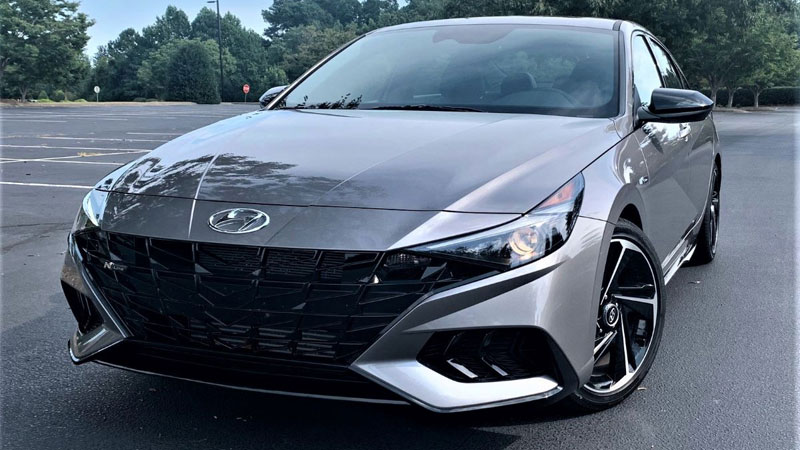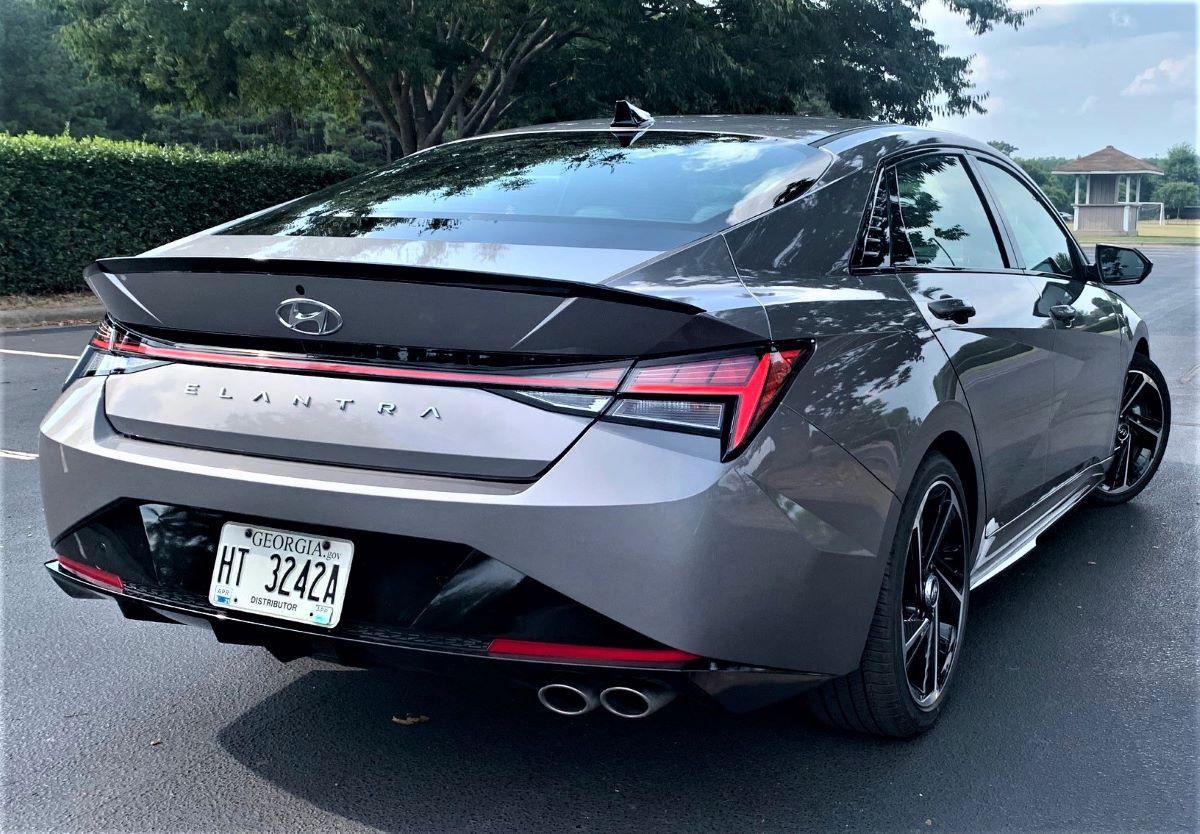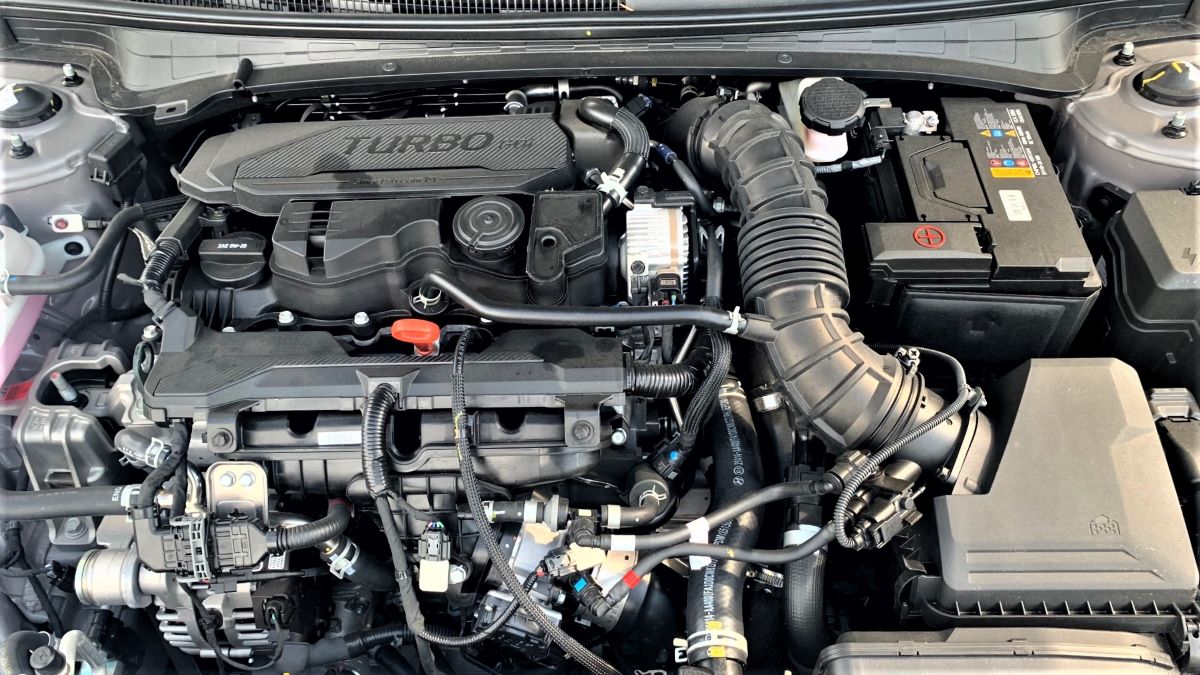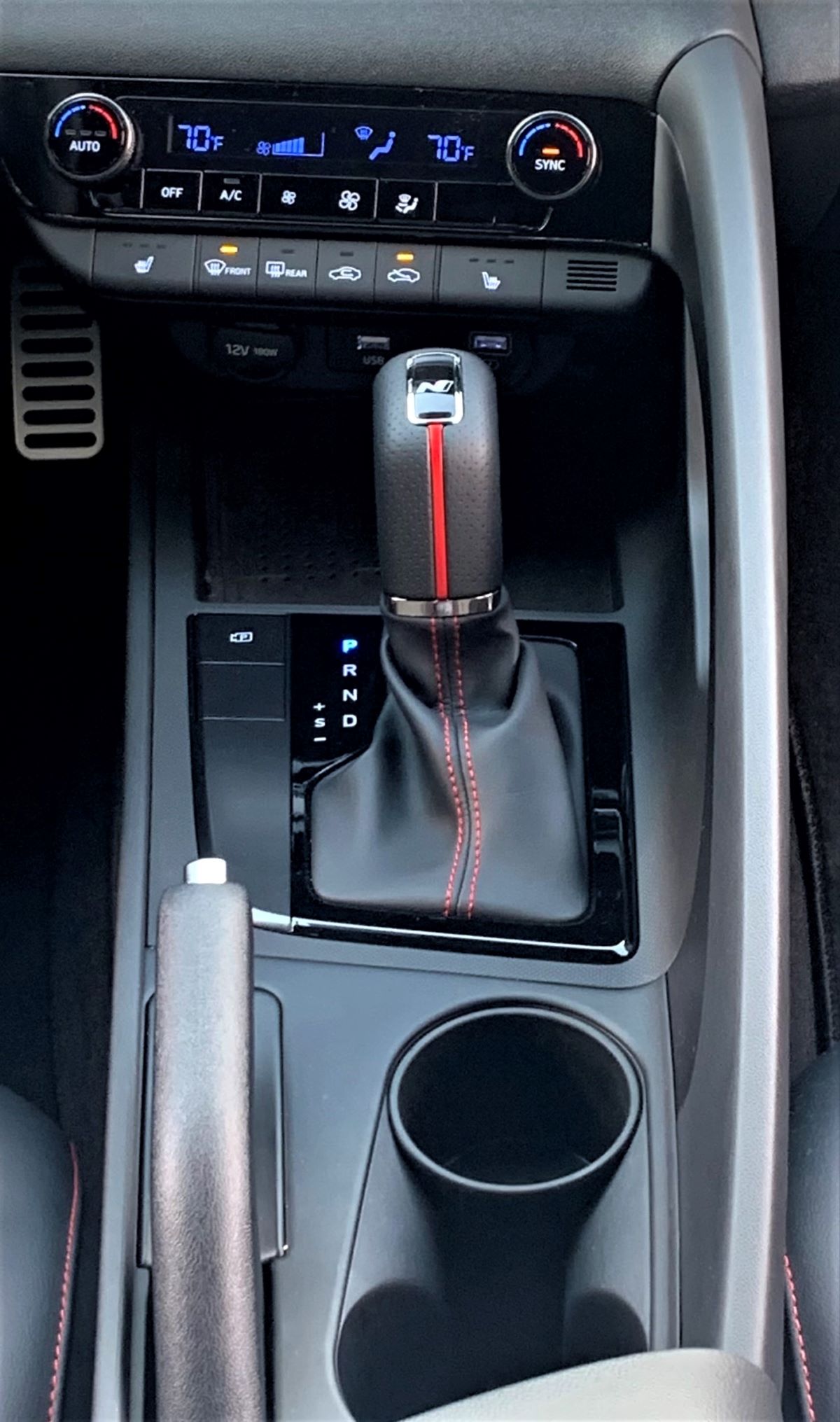The N Line gives the Elantra a performance boost.
The Hyundai brand has certainly taken some big strides in recent years. Early on, the Korean automaker was known for its budget cars and long warranties. Since the early 2000s, we have witnessed the brand’s tremendous growth, as it became a full-line automaker in short order.
Today, the Hyundai brand continues to find new ways to win customers. Just a few years removed from separating its premium models to create the Genesis brand, new priorities have emerged.
Electrification is among them and will include the pure electric Ioniq5. But the brand has also dabbled in all matters of performance — previously with the Genesis Coupe and more recently with the current-generation Tiburon.
The performance side is comprised of two lines: N and N Line. The “N” part brings in flat-out power or the highest level of performance available in a Hyundai product. On the other hand, the N Line shares many of the enhanced design characteristics of the N. But the performance upgrade is tempered, although the driving characteristics have certainly improved.
For 2021, Hyundai brings the N Line to the Elantra, its compact sedan. The Elantra is new for 2021 and the lineup now includes the standard model and a hybrid. Gone is the previous Elantra GT and GT N Line along with the Elantra Sport. Sadly, you can no longer get an Elantra hatchback in America. The sedan is it and the only remaining body style choice.
2021 Hyundai Elantra Review
For kicks, we will examine how Hyundai markets the Elantra. As of this writing, Hyundai has already transitioned to the 2022 model year for this vehicle. Therefore, our pricing is reflective of the latest details.
Hyundai offers the 2022 Elantra in SE ($19,850), SEL ($21,100), N Line ($24,250), Limited ($25,600), Blue HEV ($23,750), and Limited HEV ($28,250) trims. Add $1,005 for the freight charge. This front-wheel-drive model seats five and comes with three engine choices and four transmission pairings.
Hyundai Elantra Overview
This review focuses on the Elantra N Line, but before we head there, a few matters about the standard Elantra are worth mentioning.
First, this is an all-new model. This means for 2021, the Elantra enters its seventh generation. Further, this also means you have to go back to the early 1990s for its debut. Incidentally, the Elantra is known as the Avante or i30 in some markets.
Over the last few generations, the Elantra has followed on the heels of the Sonata for its update. Further, the Elantra shares styling cues with the midsize sedan, including a gaping grille, wraparound headlights, pronounced cutlines, and distinctive character lines.
We are pleased that automakers continue to bring much style to a segment that was once dominated by proletarian aesthetics.
Inside, the cabin is as roomy as ever, with sufficient space for five. The federal government classifies the Elantra as a mid-size model based on its interior volume. That said, it is truly a compact model that seems large for its size.
The trunk measures 14.2 cubic feet, which is on the large side for the segment. Indeed, it nearly matches the Nissan Sentra (14.3 cubic feet), although the Sentra has a wider trunk opening.
Tech and Safety
Hyundai is generous with standard features and that’s something we expect from this brand. To begin, the base model is equipped with 15-inch wheels, full power accessories, an 8-inch touch-screen display, and wireless Apple CarPlay and wireless Android Auto smartphone compatibility.
Inasmuch as these are quality items, moving up to the SEL trim adds satellite radio and unlocks a pair of packages for further customization.
The Elantra Limited brings the full bear of tech features to the model line. Specifically, wireless phone charging, a 10.3-inch display cluster, a 10.3-inch touch-screen display, and an available Bose audio system.
On the tech front, the Elantra is also well equipped. Particularly, every model comes with automatic high beams, automatic emergency braking with pedestrian detection, and active lane control.
Among the options are rear automatic braking, blind-spot monitoring, and adaptive cruise control. The only missing ingredient is an available surround-view camera system.
All in on the N Line
Shop the N Line and Hyundai brings a 1.6-liter turbocharged four-cylinder engine to the table. This one earns 201 horsepower and 195 pound-feet of torque. It works with either a 6-speed manual gearbox or with a 7-speed dual-clutch transmission. Our test model had the DCT.
Hyundai brings numerous changes to bear with the N Line. Besides the powertrain, this sporty model features 18-inch alloy wheels wrapped within summer tires (on the manual only). Larger front brake rotors, a multi-line rear suspension, and chrome twin exhaust tips are standard.
The exterior embellishments include full LED taillights, N line trim across the front grille, bumper, rear fascia, diffuser, and beltline molding, and a sunroof. Heated side mirrors are included.
Inside, Hyundai dresses the N Line in leather and cloth combination sport seats. A power driver’s seat is standard as are heated front seats. Other upgrades include a wireless charging pad, alloy pedals, and a black headliner. An N Line analog gauge cluster and a leather-wrapped sport steering wheel and shifter are included.
Choose the DCT model and the summer tires are swapped out for performance all-season rubber. This model gains paddle shifters to control the seven forward gears.
On the Road With the N Line
We are certainly glad that Hyundai imbued the N-Line with an engine that tops 200 horsepower. The Elantra’s small footprint and light weight combined with its potency make this model worthy of consideration. On the other hand, this is not a high-performance model. Instead, you will have to wait for the release of the Elantra N later in the model year.
What the N Line does is take Elantra up against the Honda Civic Si, the performance value champ in this segment. Indeed, as delivered, the manual model is about $1,000 cheaper than the corresponding Honda. Moreover, the equipment list on the Hyundai is somewhat longer, adding to this vehicle’s bargain price.
We are not big fans of paddle shifters, especially where a manual transmission is available. Nevertheless, switching the N-Line to sport mode gives the driver a measure of control without the three-pedal action. It also shifts slightly faster than the manual and that’s important for anyone placing some value on a vehicle’s spurt to 60 mph.
Earlier versions of the Hyundai 7-speed DCT were problem-plagued or at least that’s the feedback we found from owners of various Kia and Hyundai drivers who had them. The complaint back then was that the transmission caused weird shifting and occasional shuddering, neither of which builds confidence when driving.
Happily, Hyundai went to work to address these problems through recalls and by refining an updated version. A few years back we noticed the change and can report that the current dry DCT performs with satisfaction.
Fun Driver
We found the N-Line offers generous step-off acceleration. It is not especially raucous, but it is no sleeper either. Its power seems strongest in mid-range or just when you need a little extra kick to pass on the highway. The exhaust note is pleasing as well, although it is never more than a somewhat muted buzz.
On twisty roads, the N Line’s playfulness comes to bear. It moves in and out of curves with ease, although it lacks a rear differential to supply an extra measure of stability.
This means when full power travels to the front wheels, the steering becomes much more lively. Even so, the handling is sharp with the little sedan easy to control while moving in and out of curves without much drama.
It is difficult to comment on a vehicle you have not driven. In this case that would be the N Line with the manual gearbox. First, we congratulate Hyundai for offering a manual when so many manufacturers are eliminating them. Second, what our colleagues have said about the N Line with the manny tranny has us inspired.
Yes, we know there are mixed reviews about the long-throw shifter and average clutch uptake. But we have also heard favorable things about the summer (performance) tires coupled with the independent rear suspension. In our estimation, the N Line is especially tossable, making for a laudable player in a niche segment.
Our Recommendation
The Hyundai Elantra shines in a competitive as well as a shrinking segment. Models such as the Chevrolet Cruze and Ford Focus are no more. The Toyota Corolla, Honda Civic, and Nissan Sentra are the big sellers here. You will also find the Volkswagen Golf, Subaru Impreza, Kia Forte, and the Mazda3.
We think starting your search with the SEL trim and opting for the Convenience Package ($900) and Premium Package ($2,100) is something to consider. Notably, when these packages are chosen, your cost will come to around $25,000. And that’s a reasonable price to pay for a well-equipped compact sedan.
Finally, if you want more power, waiting for the upcoming Elantra N may give you what you want. We do not have all the details about this model, but if it matches the Tiburon N, then it will quickly move the Elantra to the top tier of the performance segment for its class.
See Also – Shifting Thru With a Hyundai Elantra GT
Photos copyright Auto Trends Magazine. All rights reserved.
- 2024 Mazda CX-50: A Compact SUV with Premium Aspirations - Apr 15, 2024
- 2024 Ford Mustang (Iconic Pony Car Evolves) - Apr 4, 2024
- 2024 Ford Maverick (Looks Like a Truck, Drives Like a Car) - Mar 28, 2024








